Pheochromocytoma Emergency Assessment Tool
This tool helps identify if your symptoms indicate a hypertensive emergency requiring immediate medical attention. Based on clinical guidelines for pheochromocytoma management.
Assess Your Current Symptoms
Select all symptoms you're experiencing right now:
Imagine waking up each morning wondering if today’s headache will turn into a heart‑pounding sprint. That’s the reality for many living with Pheochromocytoma, a rare tumor that lives in the Adrenal gland and spews excess Catecholamines into the bloodstream. The spikes cause moments of intense Hypertension, palpitations, sweating, and anxiety‑like symptoms. While the medical side can feel overwhelming, a handful of everyday strategies can bring predictability back into your life.
What Exactly Is Pheochromocytoma?
In simple terms, pheochromocytoma is a usually benign tumor that originates from the chromaffin cells of the adrenal medulla. These cells normally release adrenaline and noradrenaline - the body’s natural Catecholamines - to help you react to stress. When a tumor grows, it throws the hormonal dial way up, leading to episodic surges that trigger the classic “storm” of symptoms.
How the Condition Shows Up: Key Symptoms to Spot
- Sudden, pounding headaches that don’t respond to usual painkillers.
- Heart racing or irregular beats (palpitations).
- Excessive sweating, especially on the face and palms.
- Shakiness or a feeling of being on edge.
- Rapid spikes in blood pressure - often above 180/110 mmHg.
If any of these flare up together, treat it as a red flag and check your Blood pressure monitor immediately.
Medical Management: The Pillars of Treatment
Doctors usually start with medication to blunt the hormone surge, then plan for surgical removal if possible. The most common drug families are:
| Class | Typical Drug | How It Works | Key Side‑Effects |
|---|---|---|---|
| Alpha‑blocker | Phenoxybenzamine | Blocks alpha‑adrenergic receptors, lowering blood‑vessel constriction. | Dizziness, nasal congestion. |
| Beta‑blocker | Propranolol | Slows heart rate after alpha‑blockade is in place. | Fatigue, cold extremities. |
| Calcium channel blocker | Amlodipine | Relaxes vascular smooth muscle. | Swelling of ankles, flushing. |
Take note: alpha‑blocker therapy always comes first; starting a beta‑blocker alone can provoke a dangerous surge.

Day‑to‑Day Tips That Really Work
- Medication is non‑negotiable. Set alarms, use a pill‑box, and keep a log of doses. Missing a dose can cause an overnight hypertensive crisis.
- Carry a portable Blood pressure monitor. Check twice daily and after any stressful event.
- Adopt a Lifestyle modifications plan:
- Limit caffeine and alcohol - they amplify catecholamine effects.
- Eat balanced meals rich in magnesium (nuts, leafy greens) which can help smooth blood‑pressure swings.
- Exercise wisely. Light‑to‑moderate activities like walking, swimming, or yoga improve cardiovascular tone without triggering massive hormone release. Avoid high‑intensity interval training until your doctor confirms it’s safe.
- Master Stress management techniques: deep‑breathing, progressive muscle relaxation, or mindfulness apps. Even short 5‑minute sessions lower baseline catecholamine levels.
- Prioritize sleep. Aim for 7‑8 hours, keep the bedroom cool, and limit screen time before bed. Poor sleep can raise resting blood pressure.
- Stay hydrated. Dehydration makes blood vessels tighter, nudging blood pressure up.
When to Call for Help - Recognizing a Crisis
A hypertensive emergency looks like a sudden, severe headache, chest pain, vision changes, or confusion, with a blood pressure reading above 200/120 mmHg. If you notice any of these, follow the “3‑step emergency plan”:
- Sit down, breathe slowly, and re‑check your blood pressure.
- Take your rescue medication (often a fast‑acting oral nifedipine prescribed by your physician) as directed.
- Call emergency services (999 in the UK) and tell them you have pheochromocytoma.
Having this plan written on a wallet card can save precious seconds.
Long‑Term Outlook: Surgery, Genetics, and Follow‑Up
Most patients eventually undergo Surgical removal of the tumor, either laparoscopically or via open surgery. The operation is curative in the majority of cases, but lifelong surveillance is still advised because up to 10 % develop new lesions.
Genetic testing is now a standard recommendation. Certain gene mutations (e.g., RET, VHL, NF1, SDHx) raise the risk of hereditary pheochromocytoma and may affect family screening.
Post‑operative follow‑up includes quarterly plasma metanephrine tests for the first year, then annually. Even if you’re symptom‑free, keep the monitoring schedule on your calendar.
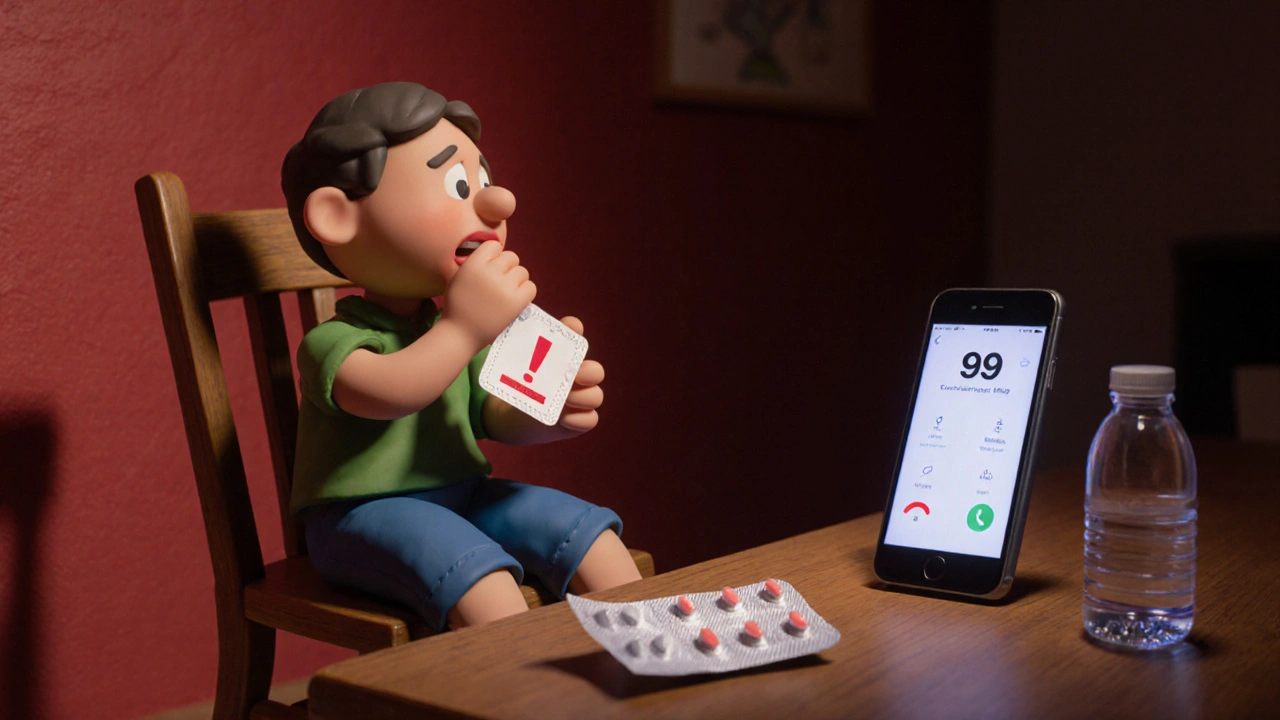
Adapting Work, Travel, and Social Life
- Workplace accommodations. Request a flexible schedule for medication timing and bathroom breaks to check blood pressure.
- Travel tips. Pack meds in carry‑on, bring extra BP cuffs, and stay hydrated on flights. Avoid altitude extremes when possible.
- Social gatherings. Explain your condition to close friends so they understand why you might decline heavy alcohol or caffeine.
Quick Checklist - Your Daily Companion
- Take meds at the same times every day.
- Measure blood pressure twice daily and after stress.
- Limit caffeine, alcohol, and high‑salt foods.
- Do 30 minutes of moderate exercise most days.
- Practice a 5‑minute stress‑relief technique.
- Keep an emergency card with medication doses.
- Schedule next follow‑up appointment.
Frequently Asked Questions
Can pheochromocytoma be cured without surgery?
Medication can control symptoms well, but the tumor itself usually needs surgical removal for a permanent cure. In rare cases where surgery isn’t possible, long‑term alpha‑blockade is the mainstay.
Is pheochromocytoma hereditary?
About 30 % of cases are linked to inherited gene mutations. Genetic testing helps identify family members who may need screening.
What should I eat to keep blood pressure stable?
Focus on a DASH‑style diet: lots of fruits, vegetables, whole grains, low‑fat dairy, and lean protein. Keep sodium under 1500 mg per day and include magnesium‑rich foods like almonds and spinach.
Can I exercise safely?
Yes, after your doctor clears you. Low‑to‑moderate activities such as walking, cycling, or yoga are ideal. Stop and check your blood pressure if you feel a sudden surge of symptoms.
How often should I see my doctor?
Before surgery, visits every 3‑4 weeks for medication titration. After removal, every 6 months for the first two years, then annually for lifelong monitoring.

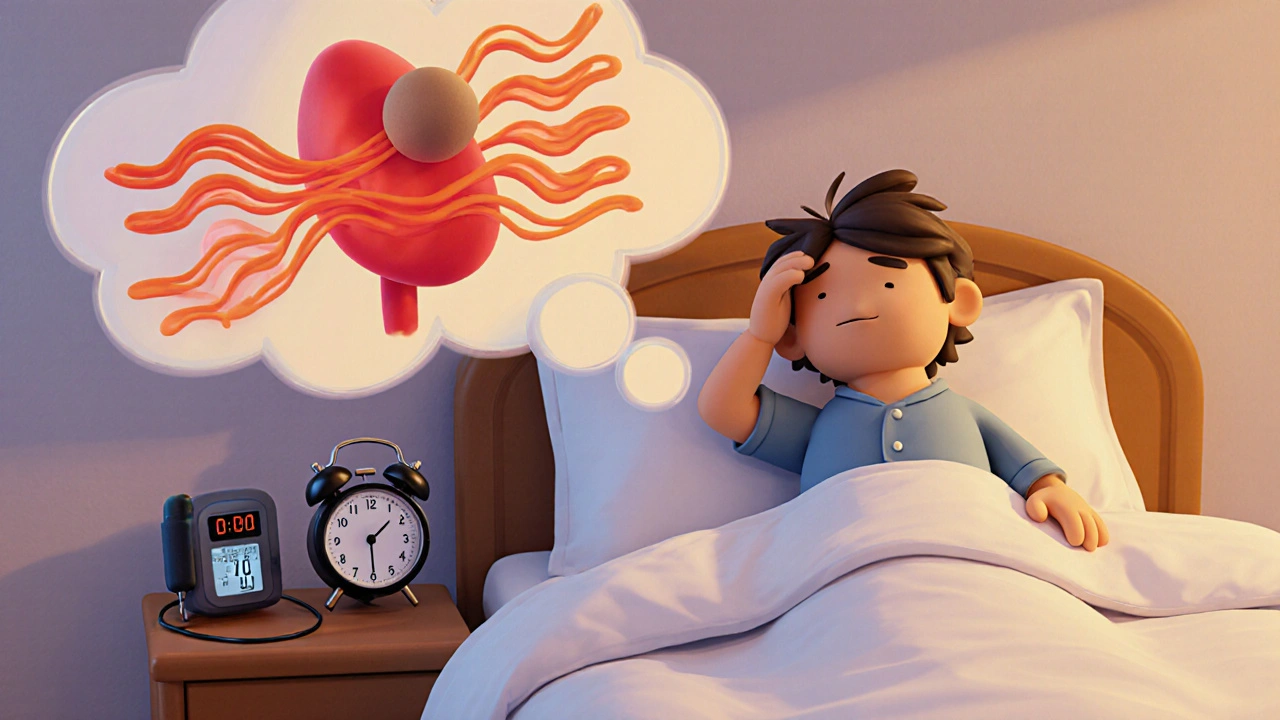
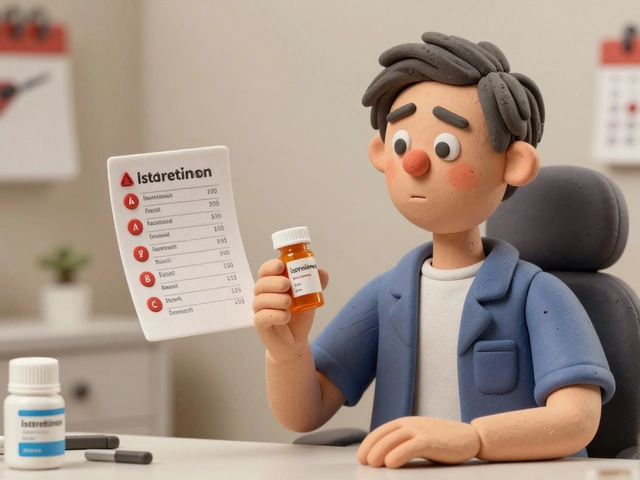
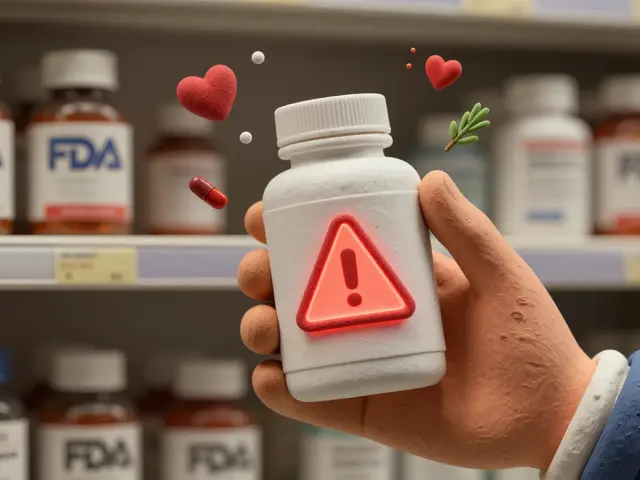
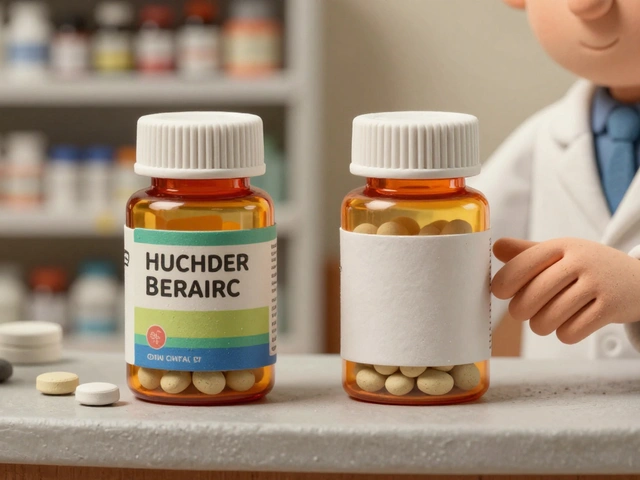
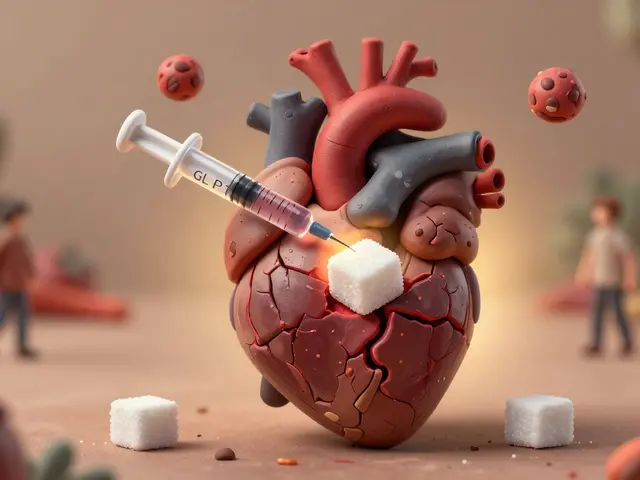

Gary Marks
Waking up to a heart that feels like a freight train barreling through a tunnel is no joke, and this guide finally gives us a battle plan.
First off, you nailed the biology-most people think a tumor is just a lump, but you explained the catecholamine fireworks like a seasoned pyromaniac.
The part about alpha‑blockers before beta‑blockers is gold; nobody wants to turn their veins into pressure cookers.
I love that you even mentioned the little things like magnesium‑rich almonds, because nutrition is the silent hero in this war.
Your emergency three‑step plan reads like a tactical drill, and I can already picture it etched on my wallet.
But let’s not sugarcoat the reality: missing a dose isn’t just a slip‑up, it’s a potential ticking time bomb.
That’s why the suggestion to set alarms and use pill‑boxes is not a suggestion, it’s a command from the front lines.
I also appreciate the stress‑management segment-deep breathing isn’t some hippie fluff, it’s a physiological reset button.
Your caution about high‑intensity interval training is spot‑on; those adrenaline spikes can turn a workout into a cardio‑crash.
Travel tips are a lifesaver; a spare BP cuff in your carry‑on is the kind of foresight most doctors forget.
The genetics section, while brief, reminds us that this disease can be a family affair, and that knowledge is power.
I do wish you’d added a few lines on how insurance paperwork can become a bureaucratic nightmare.
Still, the checklist at the end feels like a commander’s roll call before marching into battle.
Overall, this post is the kind of roadmap that turns chaos into a manageable routine.
Keep writing like this, and you’ll have a legion of patients marching in step with their own health.
Mary Keenan
You've covered the basics, but the article drags on in places where a quick bullet list would do. The tone feels like a lecture rather than a conversation. Trim the fluff and keep the actionable bits front and center.
Steven Young
The pharma giants profit from keeping patients dependent on lifelong meds they rarely disclose the full spectrum of side effects. This post glosses over the fact that many of these drugs are approved under fast‑track pathways with limited long‑term data. Beware the narrative that surgery is the only cure; industry lobbyists love to push that agenda.
Caleb Clark
Dude that guide is a game‑changer! I cant stress enough how important that alarm tip is – I used to snooze my meds like a lazy teenager and it cost me a panic attack once. Keep pushing these practical hacks and maybe throw in a quick printable sheet for folks who cant keep track of all this stuff. Also, try adding a short video walk‑through – visual aid can boost confidence big time. You’re doing awesome work, just keep the energy up and the details coming!
Jonathan Harmeling
Living with such a volatile condition is a daily reminder that we owe ourselves honest stewardship of our bodies. The discipline you outline isn’t just a medical regimen; it’s a moral contract with yourself to honor the fragile vessel you inhabit.
Ritik Chaurasia
From an Indian cultural perspective, the emphasis on balanced meals and mindfulness aligns perfectly with Ayurveda’s approach to tempering excess fire. Caffeine and alcohol are not just stimulants; they are modern disruptors of the dosha balance, so your caution resonates deeply across continents.
Kelly Brammer
Ethical responsibility extends beyond the clinic; patients must own their daily rituals to truly benefit from treatment.
Kelli Benedik
Oh my gosh, Jonathan, that hit me right in the feels! 😭 You’re basically saying we need to be saints for our own health, and I’m here for that spiritual glow‑up. 🌟 Let’s all pledge to treat our bodies like temples, not just machines. 🙏
Holly Green
Your checklist is pure gold for everyday survival.
Craig E
Reading your thorough guide feels like stepping into a well‑lit hallway of an ancient library, where each shelf holds a piece of wisdom that gently nudges us toward self‑realization. The blend of clinical detail with lived‑experience advice creates a tapestry that honors both the mind and the body, inviting us to contemplate our own resilience amidst the storm.
Oliver Johnson
Honestly, most of these health tips are just common sense; why do we need fancy medical jargon to tell us to drink water and sleep?
Taylor Haven
The so‑called ‘common sense’ narrative is exactly what the powers that be want us to believe, because it distracts us from the coordinated efforts to keep the populace dependent on pharmaceutical monopolies. When you strip away the propaganda, you see that every recommendation is a breadcrumb leading us deeper into a system that monitors, controls, and profits from our very biology, and only through vigilant skepticism can we hope to reclaim autonomy over our health.